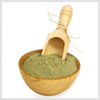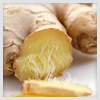Home Remedies for Chicken Pox
Chicken pox is an infectious disease which affects the skin of the patient. It starts with fever and after about two days, rashes appear on the skin. This airborne disease is caused by a virus named Varicella Zoster. The symptoms include fever, rashes, myalgia, pain in the ears, headache, malaise, nausea, etc. Generally it is not fatal. Normally people suffering from chicken pox experience severe skin irritation. Except for the irritation of the skin there is no other serious hazard from this virus. The contagiousness of the disease will last until scabs appear on the blisters. Once scabs appear, then it ceases to be contagious.
According to experts the word ‘chicken’ used here is only a synonym which could mean ‘cowardly’ or ‘weak’. This disease is not spread by chickens. In other words, chickens have nothing to do with this disease.
Treatment for Chicken Pox:
According to medical science, there is no dedicated medical procedure to treat chicken pox. Some people are of the opinion that the body’s immune system is capable of fighting the chickenpox virus. Of course, there are some medicines which are available but these medicines only ease the symptoms. Sometimes patients are advised to be put in cool environment so that the irritation of the rashes reduces. At the same time, the personal hygiene of the patient is of paramount importance. Normally the rashes will disappear within one month and it does not leave any scar.
Prevention:
Vaccination is available against chicken pox. But, chicken pox is not on the list of routine vaccinations which are normally given when a child is born. The immunization lasts up to five years. In many western countries the chicken pox vaccination is administered only to those identified as being in a vulnerable group, such as the immuno-compromised.
Home Remedies for Chicken Pox
Oatmeal as a Home Remedy for Chicken Pox
 Properties: This porridge-like cereal, also known as ‘oats’ is one of the most popular food items world-wide. Rich in minerals, fiber and vitamins but low in cholesterol, oats is the most preferred diet for people of all ages. It is said that oats have the ability to fight cancer. It can be applied externally as well. It also makes a delicious meal for breakfast, lunch or supper. Those who are particularly weight conscious will always look to ‘oats’ as their main food.
Properties: This porridge-like cereal, also known as ‘oats’ is one of the most popular food items world-wide. Rich in minerals, fiber and vitamins but low in cholesterol, oats is the most preferred diet for people of all ages. It is said that oats have the ability to fight cancer. It can be applied externally as well. It also makes a delicious meal for breakfast, lunch or supper. Those who are particularly weight conscious will always look to ‘oats’ as their main food. How to treat chicken pox using oatmeal:
Take about two cups of oatmeal and put it in about 2 liters of water and cook for about twenty minutes. Now take a small cotton bag or a white cloth and put the oatmeal into it. Tie the bag securely at the top. Now fill the bath tub with water and put the bag into the bath tub. Allow the bag to float in the tub until the water in the tub becomes turbid. Ensure that the bag does not open while it is floating in the tub. Place the child in the tub and allow the child to remain in the tub for some time. Ensure that all the rashes come in contact with the medicated water in the tub. By doing this the irritation will be reduced to a large extent.Queen of the meadow and coltsfoot leaves as a Home Remedy for chicken pox
 Properties: ‘Queen of the Meadow’ is native to European countries and is known for its curative qualities. Every part of the herb including its root has medicinal value. Before we try to understand about the coltsfoot leaves there is a theory in nature that leaves will first appear on the plant and then later, on the flowers. Insofar as coltsfoot leaves are concerned, it is something totally different. To elaborate further, that is during the early spring season flowers first appear on the plant. When the flowers wither away, the green leaves appear. It is a case of putting the cart before the horse. Coltsfoot leaves also have high medicinal value. They are also grown in European countries.
Properties: ‘Queen of the Meadow’ is native to European countries and is known for its curative qualities. Every part of the herb including its root has medicinal value. Before we try to understand about the coltsfoot leaves there is a theory in nature that leaves will first appear on the plant and then later, on the flowers. Insofar as coltsfoot leaves are concerned, it is something totally different. To elaborate further, that is during the early spring season flowers first appear on the plant. When the flowers wither away, the green leaves appear. It is a case of putting the cart before the horse. Coltsfoot leaves also have high medicinal value. They are also grown in European countries. How to treat chicken pox using ‘Queen of the Meadow’ and coltsfoot leaves:
Take two spoons of ‘Queen of the Meadow and one spoon of coltsfoot leaves and two spoons of marigold flowers. Put all these in boiling water and allow it remain in the water for about 20 minutes. Then strain it and allow it to cool. Thereafter apply the paste to the affected areas. Allow the paste to remain in place for about thirty minutes. Thereafter, the patient can take a bath.Hazel leaves as a Home Remedy for chicken pox
 Properties: The hazel is a tree native to the Northern hemisphere. There are many varieties of hazel trees and all these have medicinal value. Basically, the nuts of the hazel tree are used for edible purposes. Except the nuts and the leaves, other parts of the tree do not have any medicinal value.
Properties: The hazel is a tree native to the Northern hemisphere. There are many varieties of hazel trees and all these have medicinal value. Basically, the nuts of the hazel tree are used for edible purposes. Except the nuts and the leaves, other parts of the tree do not have any medicinal value. How to treat chicken pox using hazel leaves:
Take about 2 teaspoons of hazel leaves and marigold flowers. Mix them and add water to it and steep them overnight. In the morning grind them thoroughly and then apply it to the rashes. Allow the medicine to stay on the rashes for about an hour. Then allow the patient to take a bath.Green peas as a Home Remedy for chicken pox
 Properties: Green peas may not require any introduction. This herb is popular throughout the world. It is grown in most countries and it is one of the commonly used vegetables throughout the world.
Properties: Green peas may not require any introduction. This herb is popular throughout the world. It is grown in most countries and it is one of the commonly used vegetables throughout the world. How to treat chicken pox using green peas:
In the pod some peas may be yellow or brown. For the purpose of treating chicken pox do not use those peas which are yellow and brown in color; instead, take the green peas (peas that are really green). Take a bowl of water and add about 200 grams of green peas (depending on the severity) and allow it to boil. Once the water boils, drain the water and mash the peas. Apply this paste to the affected area. Allow the paste to stay on the affected area for at least an hour.Brown vinegar as a Home Remedy for chicken pox
 Properties: Vinegar has been in use for thousands of years. Vinegar is actually an acid derived from fermented ethanol. The other form of vinegar is natural vinegar which is derived from fermentation of natural products like rice, various types of fruits etc. Brown vinegar is actually obtained from fermenting barley.
Properties: Vinegar has been in use for thousands of years. Vinegar is actually an acid derived from fermented ethanol. The other form of vinegar is natural vinegar which is derived from fermentation of natural products like rice, various types of fruits etc. Brown vinegar is actually obtained from fermenting barley. How to treat chicken pox using brown vinegar:
Add about a half cup of brown vinegar to the bath tub and then allow the patient to remain in the tub for at least ten minutes. The quantity of vinegar can be varied depending on the severity of the rashes. Similarly, apple cider vinegar can also be used.Neem as a Home Remedy for chicken pox
 Properties: The neem tree is native to India and other Asian countries. In many parts of India, neem leaves are used for worship during religious functions. Some people even worship the neem tree. Every part of the neem tree has medicinal value. The neem is also used for pest control purposes.
Properties: The neem tree is native to India and other Asian countries. In many parts of India, neem leaves are used for worship during religious functions. Some people even worship the neem tree. Every part of the neem tree has medicinal value. The neem is also used for pest control purposes. How to treat chicken pox using neem:
Take about one and half bowlful of neem leaves and put it in warm bathwater and allow it to remain in the water for about 15 minutes. Use this water to give a bath to the patient. Alternatively use neem powder. Another procedure suggested is to take some neem leaves, wash them and dry with a clean cloth. Spread the leaves on the bed of the patient. In this case it is suggested that the leaves which are spread on the bed must be replaced every day with new leaves.Ginger as a Home Remedy for chicken pox
 Properties: This is a common item in every kitchen. It can be used as a spice or as a delicacy or even as medicine. It grows below the earth and is grown in most countries.
Properties: This is a common item in every kitchen. It can be used as a spice or as a delicacy or even as medicine. It grows below the earth and is grown in most countries. How to treat chicken pox using ginger:
Fill up the bath tub with cool water. Take about 250 grams of Ginger and wash it thoroughly. Allow the ginger to remain in the bath tub for at least 45 minutes. Now allow the patient to enter the bath tub. Even while he is in the tub, ensure that the ginger remains in the bath tub.Other Home Remedies for Chicken Pox
Put about half cup of vinegar into the bathwater. This gives considerable relief from irritation.
Leaves of the patola tree or babool tree are very useful. The treatment is similar to that of neem tree leaves which are discussed above.
To prevent dehydration ensure the patient drinks plenty of water
The patient must be given a lukewarm bath every day so that itching is reduced.
Apply good quality talcum powder. If the itching is too much, the patient may scratch the area using his nails. This could be dangerous as it may lead to infection. Therefore ensure that the nails of the patient are cut.
Smear honey on the rashes to relieve the irritation.
Some doctors suggest that steroid creams should never be applied to the rashes because it may aggravate the rashes.
Take about 100 grams of carrot and about 60 grams of coriander and make a soup. It tastes good and provides considerable relief from irritation.
Herbal tea consisting of basil, chamomile, lemon bond, marigold or even honey is of great help in relieving skin irritation. Give the patient a few cups of this tea every day.
Vitamin ‘E’ oil is also beneficial to reduce skin irritation of those suffering from chicken pox.
| Add your Home Remedy below.. | |

